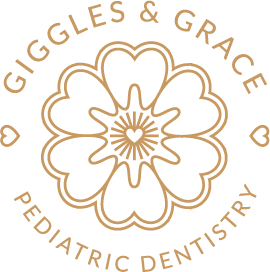
Catering to the dental needs of kids requires a special touch. Children are not little adults. Treating the dental challenges of children requires the patience, skills and expertise that Dr. Pham provides. Pediatric dentists are specially trained to treat the oral health needs of children, from infancy through their teenage years. This involves in-depth knowledge about children’s behavior, as well as their growth and development. Pediatric dental offices are also designed to make kids feel comfortable and relaxed – with plenty of toys, activities and a warm, inviting and fun décor.
No matter how often you brush and floss, plaque and tartar deposits can still build up on your teeth. A professional teeth cleaning is the single most effective way to remove these deposits and prevent them from causing more serious problems in the future. While a traditional teeth cleaning involves manually scraping away these deposits with special dental tools, advances in dental technologies now give you more options for teeth cleanings.
A laser teeth cleaning, also known as an ultrasonic cleaning, is a popular alternative to traditional teeth cleanings. With a laser teeth cleaning, an ultrasonic scaler (rather than a manual probe) is used to remove deposits, kill harmful microbes and eliminate bacteria around the teeth and gums through high-frequency sound waves. Many patients find laser teeth cleanings more comfortable than traditional teeth cleanings because they are quicker, quieter and pain-free.
A deep cleaning may be recommended if excessive plaque and tartar deposits have developed below the gum line. Deep cleanings, also known as scaling and root planing, involve a two-part process: first, the stubborn deposits are removed, and then the root surfaces are smoothened. A deep cleaning helps prevent periodontal disease and restores gum tissues to a healthy state.
Fluoride varnish treatment is an important way to prevent decay. A tooth-colored fluoride gel that adheres to the teeth is applied to your child’s teeth, and it helps remineralize tooth structure and prevent tooth decay.
The fluoride varnishes we use at the office come in unique flavors, and they are also nut-free, dye-free, and gluten-free.
X-rays are NOT TAKEN AS A MATTER OF ROUTINE in our office.
Dr. Pham believes that they should be used very sparingly, noting that this has been the position of the American Academy of Pediatric Dentistry (AAPD), the American Dental Association (ADA) and the Food and Drug Administration (FDA), with tweaks here and there, since 1987.
The ADA, in fact, has a guiding principal called ALARA (As Low As Reasonably Achievable) regarding responsible radiologic practice, which states that, even once it’s been determined that x-rays are necessary, they should be as minimal as possible to reduce a patient’s exposure.
We exclusively use digital x-rays, which can lower radiation exposures by around 80 percent.
A dentist’s decision to take x-rays of a kid’s mouth, says Dr. Paul Casamassimo, who is the Director of the AAPD’s Pediatric Oral Health Research and Policy Center, should be based on the following: the child’s assessed risk of tooth decay, any signs of a problem that needs to be further investigated (such as pain, swelling, abnormal development), and how tightly together the baby teeth are spaced. “If we can see between the teeth,” he says, “we don’t expose them to radiation.” If there are spots that can’t be seen or felt, he explains, and x-rays of those teeth are taken and no problems are discovered, then the child can go up to two years without more x-rays.
Dr. Pham practices these “image gently” principles.
